Recent Posts
Water Damage Restoration: Your Guide to Peace of Mind in Haines City and Polk City
12/7/2023 (Permalink)
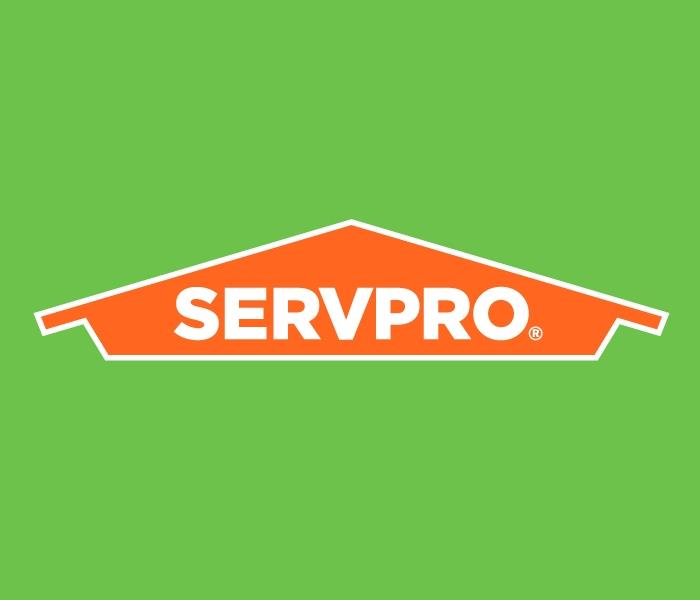 Water damage can be overwhelming, but you don't have to face it alone.
Water damage can be overwhelming, but you don't have to face it alone.
Living in Central Florida, we're no strangers to the unpredictable nature of weather. From heavy downpours to burst pipes, water damage can strike at any time, causing significant disruption and stress. Whether it's a minor leak or a major flood, SERVPRO of Haines City/Polk City is your trusted partner for comprehensive water damage restoration services.
Our Expertise in Water Damage Restoration:
Our team of highly trained and certified technicians has extensive experience responding to all types of water damage emergencies. We utilize state-of-the-art equipment and techniques to:
- Extract water: We use powerful pumps and vacuums to remove standing water from your home or business, preventing further damage.
- Dry out the affected area: We use dehumidifiers and air movers to circulate air and promote rapid drying, preventing mold growth and structural issues.
- Clean and disinfect: We thoroughly clean and disinfect all affected surfaces to remove bacteria, mold, and other contaminants.
- Repair and rebuild: We can handle any necessary repairs or rebuilding work, restoring your property to its preloss condition.
Why Choose SERVPRO of Haines City/Polk City for Water Damage Restoration?
- 24/7 Emergency Response: We are available 24 hours a day, 7 days a week, to respond to your water damage emergency quickly and efficiently.
- Fast and Efficient Service: We understand the urgency of the situation and work diligently to minimize downtime and disruption to your life.
- IICRC Certified Technicians: Our technicians are certified by the Institute of Inspection Cleaning and Restoration Certification (IICRC), ensuring they are trained to the highest standards in the industry.
- Advanced Technology and Equipment: We utilize the latest technology and equipment to ensure effective and efficient water damage restoration.
- Clear Communication and Transparency: We keep you informed throughout the entire restoration process, addressing any questions or concerns you may have.
- Insurance Claim Support: We work directly with your insurance company to ensure a smooth claims process.
- Peace of Mind: We offer a satisfaction guarantee, so you can be confident that your property will be restored to its preloss condition.
Don't Let Water Damage Ruin Your Life:
Water damage can be overwhelming, but you don't have to face it alone. SERVPRO of Haines City/Polk City is here to help you navigate through the restoration process and get your life back to normal. Contact us today for a free estimate and let our experienced team take care of everything.
Here are some additional tips for preventing water damage in your home or business:
- Regularly inspect your plumbing for leaks and signs of wear and tear.
- Install a water shut-off valve on your main water line.
- Have your gutters cleaned regularly to ensure proper drainage.
- Keep your basement or crawlspace dry and well-ventilated.
- Be prepared for emergencies by having a water damage restoration plan in place.
By taking these steps and choosing SERVPRO of Haines City/Polk City for your water damage restoration needs, you can protect your property and restore peace of mind.
Protecting Your Business Investment: Why SERVPRO is Polk County's Trusted Partner for Commercial Property Restoration
12/7/2023 (Permalink)
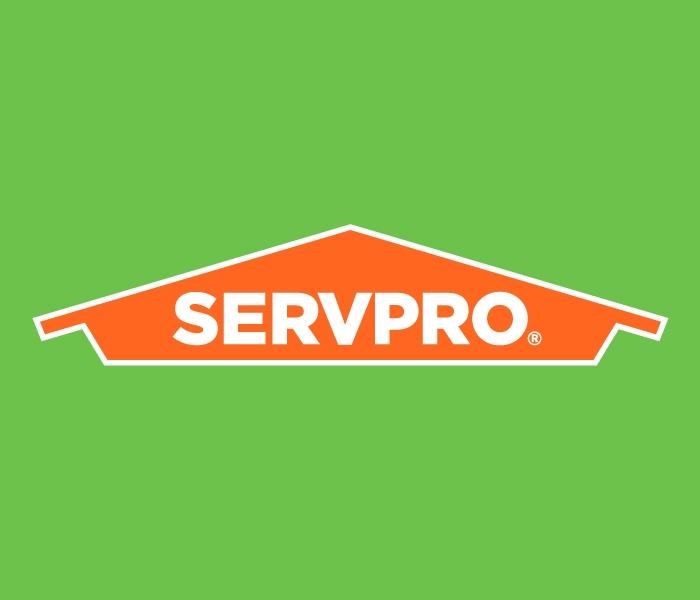 Our top priority is to get your business back up and running as quickly as possible.
Our top priority is to get your business back up and running as quickly as possible.
Protecting Your Business Investment: Why SERVPRO is Polk County's Trusted Partner for Commercial Property Restoration
In the dynamic and bustling world of business, unexpected events can have a significant impact. Whether it's a fire, flood, or another disaster, damage to your commercial property can lead to costly disruptions and lost revenue. That's where SERVPRO of Haines City/Polk City comes in. We are your trusted partner for comprehensive commercial property restoration, equipped to handle any challenge and get your business back on track quickly and efficiently.
Here's why SERVPRO is the ideal choice for your commercial property restoration needs:
24/7 Emergency Response: We understand that time is money, especially for businesses. That's why we offer 24/7 emergency response services, ensuring that our team of certified technicians is ready to respond to any disaster, day or night.
Minimizing Downtime: Our top priority is to get your business back up and running as quickly as possible. We use advanced equipment and techniques to efficiently mitigate damage and restore your property to its preloss condition, minimizing downtime and revenue loss.
Wide Range of Services: We offer a comprehensive range of commercial restoration services, including water damage restoration, fire damage restoration, mold remediation, storm damage restoration, and more. This means you can rely on one trusted partner to handle all your restoration needs.
Experienced and Certified Technicians: Our team of technicians is highly trained and certified by the Institute of Inspection Cleaning and Restoration Certification (IICRC). This ensures that they possess the expertise and knowledge to handle even the most complex restoration projects.
Focus on Communication and Transparency: We believe in clear communication throughout the entire restoration process. We will keep you informed every step of the way, from the initial assessment to the final cleanup, ensuring you are always in the loop.
Customized Solutions: We understand that every business is unique. That's why we tailor our restoration solutions to your specific needs and budget, ensuring the most efficient and cost-effective results.
Insurance Claim Assistance: We are experienced in working with major insurance companies and can help you navigate the claims process, making the restoration process smooth and stress-free.
Commitment to Quality and Safety: We are dedicated to providing the highest quality restoration services while adhering to strict safety protocols. We use only the best materials and practices to ensure the safety of your employees, customers, and property.
Strong Community Ties: We are proud to be a part of the Polk County community and actively support local businesses and organizations.
Choosing SERVPRO of Haines City/Polk City for your commercial property restoration needs means choosing a team of experts who are dedicated to providing exceptional service and minimizing disruption to your business. We understand the challenges you face and are committed to helping you recover quickly and efficiently so you can get back to what matters most: running your business.
Why SERVPRO of Haines City/Polk City is Your Leader in Restoration
12/7/2023 (Permalink)
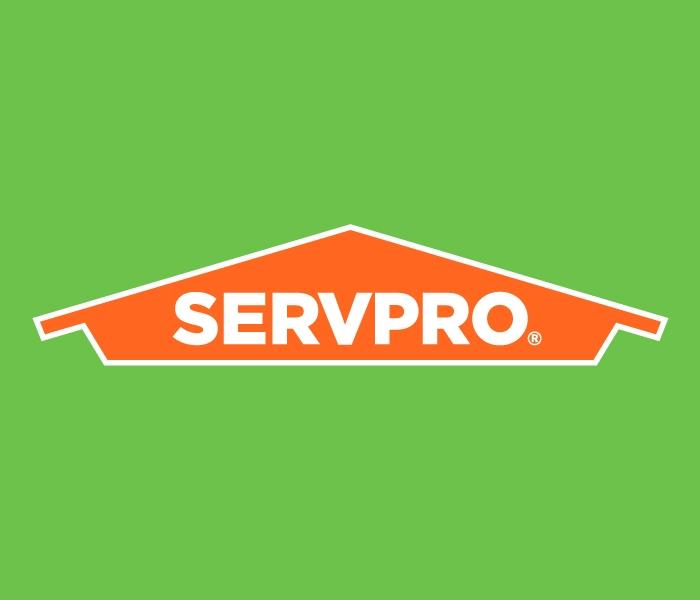 SERVPRO of Haines City/Polk City is proud to be the community's go-to choice for all things restoration.
SERVPRO of Haines City/Polk City is proud to be the community's go-to choice for all things restoration.
When disaster strikes, whether it be a flood, fire, or another unforeseen event, having a reliable and experienced restoration partner is essential. SERVPRO of Haines City/Polk City is proud to be the community's go-to choice for all things restoration, and there are several reasons why we stand out as a leader in the field.
1. 24/7 Emergency Response: We understand that emergencies don't happen on a schedule. That's why we offer 24/7 emergency response, ensuring we are there for you when you need us most. Our team is always ready to mobilize and begin the restoration process as quickly as possible.
2. Unparalleled Expertise and Experience: Our team of highly trained and certified technicians possesses extensive experience in all areas of restoration, including water damage, fire damage, mold remediation, and biohazard cleanup. We stay up-to-date on the latest industry technologies and techniques, ensuring we can handle any restoration challenge effectively.
3. Commitment to Excellence: We are dedicated to providing our customers with the highest quality service possible. We use only industry-approved equipment and cleaning products, ensuring a thorough and effective restoration process. We also prioritize clear communication and transparency throughout the entire process, keeping you informed every step of the way.
4. Local Knowledge and Community Involvement: We are proud to be deeply rooted in the Haines City/Polk City community. Our local knowledge allows us to understand the unique challenges our neighbors face and tailor our restoration solutions accordingly. We also actively participate in community events and support local charities, demonstrating our commitment to the well-being of our community.
5. Trusted Partner with Insurance Companies: We are a preferred vendor for major insurance companies, making the claims process easier and less stressful for you. We can work directly with your insurance company to ensure your claim is processed quickly and efficiently.
6. Peace of Mind and Satisfaction Guarantee: When you choose SERVPRO of Haines City/Polk City, you can be assured that your property is in the hands of qualified professionals who are committed to restoring it to its preloss condition. We offer a satisfaction guarantee, ensuring you are happy with the results.
7. A Wide Range of Restoration Services: We offer a comprehensive range of restoration services beyond just water and fire damage. We also specialize in mold remediation, biohazard cleanup, storm damage restoration, and more. No matter what type of restoration challenge you face, we have the expertise and resources to help.
8. Environmentally Friendly Practices: We are committed to protecting the environment. We use eco-friendly cleaning products and procedures whenever possible and minimize waste throughout the restoration process.
9. A Strong Reputation: We have built a strong reputation for our exceptional service, professionalism, and commitment to customer satisfaction. We are proud of the positive feedback we receive from our clients and are always striving to improve our services.
10. Always Here for You: We are here to support you in your time of need. We offer free consultations and estimates, and we are always available to answer your questions and address your concerns.
If you are facing a property damage emergency, don't hesitate to contact SERVPRO of Haines City/Polk City. We are here to help you get through this difficult time and restore your property to its former glory.
SERVPRO Partners With The University of Florida
2/21/2023 (Permalink)
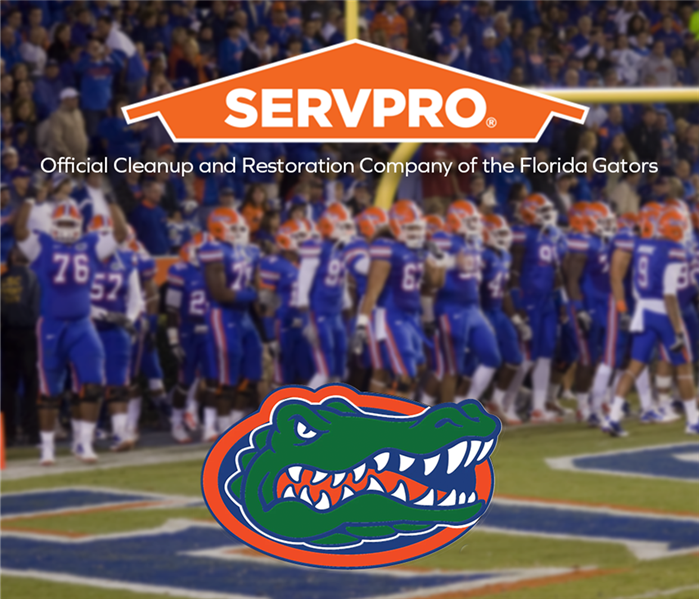 This new agreement marks a significant milestone in SERVPRO's commitment to supporting collegiate sports and the Florida Gators!
This new agreement marks a significant milestone in SERVPRO's commitment to supporting collegiate sports and the Florida Gators!
SERVPRO proudly announces its continued partnership with Florida Gators athletics for the 2023-24 athletic season. This new agreement marks a significant milestone in SERVPRO's commitment to supporting collegiate sports and the Florida Gators' commitment to providing successful and memorable experiences for their fans.
Through this agreement, SERVPRO and its franchises will continue to provide a wide range of services, such as on-site cleaning, restoration, and management solutions for all of the Gators' athletic venues. The company will also provide additional support through marketing initiatives and sponsorships. This relationship is a testament to both parties' dedication to delivering excellent service and creating memorable experiences for everyone involved.
Burn Bans: Everything You Need to Know
12/5/2022 (Permalink)
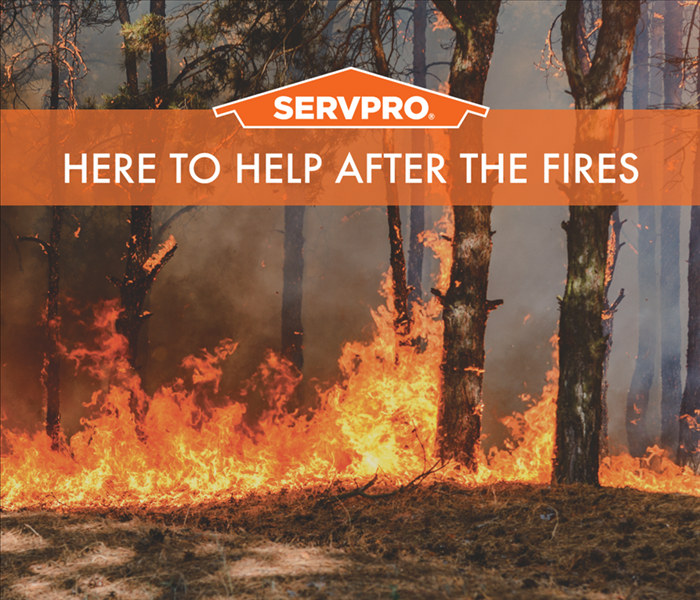 Check your local news if you live in an area with a lot of wildfires.
Check your local news if you live in an area with a lot of wildfires.
Burn Bans: Everything You Need to Know
You've just had a long day, and all you want to do is relax. One of your favorite ways to relax is to start a fire in your backyard fire pit and enjoy the peace and quiet. But then your neighbor knocks on your door and tells you that there's a burn ban in effect for your county. What does this mean exactly? How do I know if my county has issued one? And what about those "exceptions" I keep hearing about?
What is a burn ban?
A burn ban is a restriction on open fires, like campfires and backyard fires. A burn ban is issued by the fire marshal of each county. When a burn ban is in place, it prohibits all open burning and other activities that could start wildfires.
Burn bans are typically issued during the summer to help prevent wildfires from starting due to dry conditions, high winds, and low humidity levels. During a burn ban you should not:
- Start a fire of any kind (even in approved containers).
- Have bonfires or campfires outside of designated areas (such as recreational areas).
Why do we have burn bans?
A burn ban helps prevent wildfires by reducing the risk of injury from sparks or embers being blown by the wind onto dry vegetation that may accidentally start a fire. In addition to wildfire prevention, a burn ban also reduces smoke in your neighborhood (although this may be inconvenient for you). It also helps minimize the chance that a fire will spread to other properties and threaten life or property in those areas.
When are burn bans issued?
When it comes to burn bans, the conditions that may lead to a ban are not always predictable. In general, if there is a high risk of wildfire and the weather is hot and dry, a burn ban will likely be issued. The best way to know when a burn ban is in effect is simply by looking at your local news station or checking their website.
However, since this information can change quickly depending on how fast conditions change (like how quickly it gets windy), you should always check with your local fire department before starting any fires outdoors.
Who issues burn bans?
A burn ban is a restriction on outdoor burning, and the authority to issue one is typically at the discretion of a state fire marshal or local fire chief. This person may also be able to issue a temporary ban if they see smoke or smell smoke in their area as well. If you hear about a burn ban in your area, it's best to check with your county sheriff and/or emergency management coordinator to see if this applies to you.
How do I find out if there's a burn ban in my county?
Start by checking the local news. Typically this will be your newspaper or other print media. If you live in an area with a lot of wildfires, you might have a regular burn ban updates section in the paper that tells people when they can and cannot use their grills and fire pits. You can also check with your county sheriff's office. Many counties have websites that list current burn bans as well as any new ones that are put into effect. You can also call them directly if you don't want to go online right now (or if we've already told you that their website is down).
What does a countywide burn ban prohibit?
- No open burning, including campfires and charcoal grills.
- You can’t smoke outside of your home or vehicle.
- You can't light fireworks or sparklers during a burn ban, even if they're legal where you live (and they may be).
- You also shouldn't use anything that creates an open flame, like fire pits, tiki torches, or fireworks during a burn ban (even though it's perfectly legal to use them under normal circumstances).
- No welding or cutting metal outdoors
Does a countywide burn ban affect me if I live within the city limits of an incorporated town or city?
If you live within the city limits of an incorporated town or city, you must follow the burn ban issued by that city or town. If you live in a rural area, you must follow the burn ban issued by your county.
A burn ban is a serious thing, and you should take it seriously. If there is a countywide burn ban in effect, it means that there are restrictions on how you can use your fireplace or wood-burning stove. The outdoors can be quite lovely during the winter months, so staying indoors to keep warm doesn't always seem like such a bad idea. But if you want to stay warm without breaking the law and potentially putting yourself or others at risk of injury or death (especially when children are involved), then make sure you know all about burn bans before trying anything else!
If your Haines City home suffers from a fire getting out of control, particularly during a burn ban, give SERVPRO of Haines City/Polk City a call. We will be there to help you restore!
Everything You Need to Know about an Overflowing Toilet
11/2/2022 (Permalink)
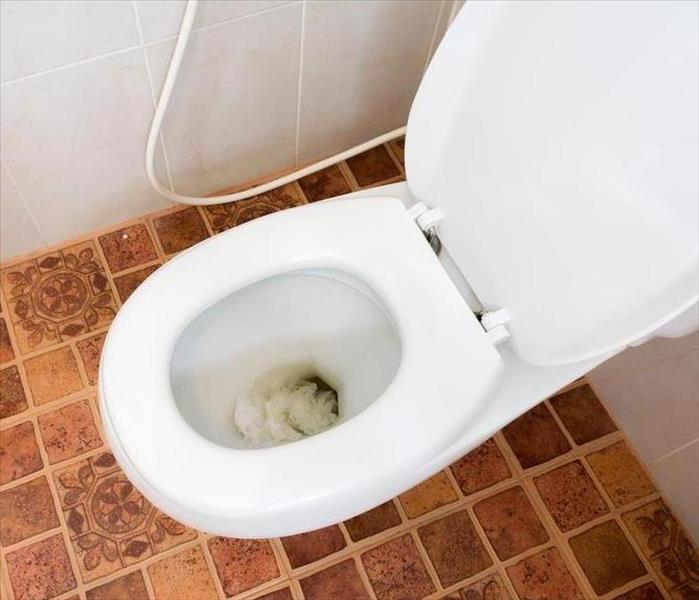 If you have a clogged toilet and it overflows then you need to take some immediate steps to avoid further damage.
If you have a clogged toilet and it overflows then you need to take some immediate steps to avoid further damage.
Everything You Need to Know about an Overflowing Toilet
If you have a clogged toilet and it overflows in your Haines City, FL home, then you need to take some immediate steps to avoid further damage. You can fix this at home with a plunger or auger but first, let’s understand why toilets overflow in the first place. In this blog, we will discuss the basics of an overflowing toilet, how to stop it, and how to fix it (if necessary).
Toilet Overflow Basics
A toilet bowl overflow occurs when water flows past the trap seal in your bathroom and goes into the floor drain instead of back into the tank of your commode. The most common causes of this problem are clogs or poor sealant around the bottom of your waste pipe. These can be caused by old age, loose connections between pipes under your bathroom flooring, or even foreign objects such as toys that were flushed down toilets accidentally by children playing in the bathroom. Regardless of how it happened though, if it still hasn't been fixed by now then you probably need professional help.
How to Stop It
Start by shutting off the water supply valve and flush the toilet. Check if the water has stopped flowing, then remove any wet or soiled items from around your toilet and bathroom floor as soon as possible (if you're not sure what type of carpeting you have, test a small area by rubbing some soapy water on it; if it's latex-backed, you can blot up most spills with paper towels).
If the water has not yet overflowed from the bowl, use a sponge or rags to soak up as much of it as possible. If you do not have a bucket handy, consider using a towel or rag to catch any remaining water. While this method is less effective and messier than using a bucket/mop, it's better than nothing if a suitable container isn't available.
Do not touch the water with your bare hands! If there is any doubt about whether or not the toilet overflow was caused by an overflowing toilet bowl rather than an overflowing drain line (see Section 1), you should wear gloves when handling anything wet in order to avoid coming into contact with fecal matter—which could lead to infection if ingested.
If the overflow is caused by a clogged toilet, try plunging it to unclog any blockages that are caught in the trap way below. To do this, place your plunger into the bowl of water and push down on one side of it until you feel it start to seal against the surface of the drain. Then, pull up slightly and press down again. Repeat these steps until water no longer flows out through your sink or bathtub faucet.
If your plunger does not clear the blockage, you may need to use a toilet auger to clear the blockage causing the overflow. The auger will be able to reach further into the trap way than a plunger can!
If you've followed these steps and your toilet is still overflowing, it might be time to call a SERVPRO of Haines City/Polk City. Don't wait until tomorrow, call us today!
Flood Risk
7/1/2022 (Permalink)
If you’re in the process of buying a house or you’re looking for a new homeowners insurance policy, you might be familiar with what a flood zone is. If you don’t know what they are, you might want to start reading up on them.
Zoning for Floods?
A flood zone is an area in a specific geographical space that the Federal Emergency Management Agency has determined has at least some risk of flooding. There are four primary types of zones, which correlate to the severity or category of excessive water events that can occur in that area.
- Moderate to Low-Risk Areas
- High-Risk Areas
- High Risk – Coastal Areas
- Undetermined Risk Areas
How to Find Your Zone
Each area’s zones are depicted on a community's Flood Insurance Rate Map, also known as FIRM, which can be found online at https://www.fema.gov/flood-insurance-rate-map-firm. You can also contact your local municipality or look on their website, most cities will have zoning information available online. You can try searching for the term “flood elevation certificate” for faster results.
Some people may think that these zones can only be found next to a large body of water or along a river or stream, but that’s not the case. Houses that are nowhere near a body of water can experience a flood if there’s a large rain storm.
Emergency Preparedness
Knowing what kind of flood zone you live in can also be helpful for storage options and emergency preparedness. If you live in a high-risk zone, for example, you probably don’t want to put boxes directly on the floor, and you might want to increase the number of your emergency supplies.
If you weren’t aware that your home is potentially at risk for a flood, and a storm causes water-related damage, you should contact a storm damage specialist in your area to determine your best course of action and get the damage repaired as quickly as possible.
When Storms or Floods hit, SERVPRO is ready!
6/22/2022 (Permalink)
When Storms or Floods hit, SERVPRO is ready!
SERVPRO specializes in storm and flood damage restoration. Our crews are highly trained and we use specialized equipment to restore your property to its pre-storm condition.
Faster Response
Since we are locally owned and operated, we are able to respond quicker with the right resources, which is extremely important. A fast response lessens the damage, limits further damage, and reduces the restoration cost.
Resources to Handle Floods and Storms
When storms hit, we can scale our resources to handle a large storm or flooding disaster. We can access equipment and personnel from a network of 1,800 franchises across the country and elite Disaster Recovery Teams that are strategically located throughout the United States.
Cleaning requirements After a Home Flood
6/22/2022 (Permalink)
There are certain cleaning requirements you need to follow when sanitizing your home after a flood. You need the right flood disinfectant, and you must take steps to prevent the buildup of mold.
A flood clean is lengthy and complicated. It can also be dangerous if you are not properly protected. Before you start washing and drying everything, you need the proper safety gear. This includes:
- Boots
- Pants
- Long sleeves
- Elastic gloves
- Face masks
- Goggles
You also need to know how to clean the various rooms of your home. Different items need to be cared for in different ways. Below are the basic cleaning requirements and techniques for restoring your flood-damaged house.
Applying Disinfectant
To prevent the spread of bacteria throughout your home, you need to disinfect any surfaces. Start by scrubbing these surfaces with hot water and a powerful cleaner. Then apply a disinfectant. You can create your own by combining a gallon of water with a quarter-cup of chlorine bleach.
Cleaning the Kitchen
Metal items such as pots, utensils, and pans should not be cleaned with bleach. Instead, disinfect them by boiling them in water for 10 minutes. A bleach solution can be used on china, glass, porcelain, and enamel items, however. Be sure to disinfect your counters and cupboards before putting dishes away.
Saving Your Valuables
Some items, such as mattresses, stuffed animals, and toys, may have to be thrown away after a flood. However, you may be able to freeze books and photographs after wiping off excess mud. You can then thaw them and take them to an expert for cleaning.
Most floods cause complex damage that one person cannot handle by himself. If you do start the process alone, be sure to follow the above cleaning requirements. However, your best bet is to contact a company that provides emergency restoration services. Professionals can safely clean up your home and dry your belongings.
Leading Causes of Fires - How to Avoid
6/20/2022 (Permalink)
Cooking is the leading cause of home fires & injuries in the U.S. Cooking fires often result from unattended cooking and human error, rather than mechanical failure of stoves or ovens. Although it is important to make sure your appliances are functioning properly and kept up to date, it is equally important to cook with caution and never get too comfortable in the kitchen.
Heating is the second leading cause of residential fires. However, heating fires are a larger problem in single-family homes than in apartments. Unlike apartments, the heating systems in single-family homes are often not professionally maintained. Make sure your heating systems are being professionally regulated during the colder seasons.
Although accidents happen, it is important to be prepared and alert in order to minimize these changes before they occur. Here are a few simple safety precautions to take to decrease the possibility of a fire.
- Keep flammables away from ignition sources.
- Utilize flammable storage cabinets.
- Know your chemical properties.
- Do not block fire extinguishers with equipment.
- Utilize those with electrical expertise/installations/assistance.
- Do not overload outlets - use a track plug.
- Practice good housekeeping techniques in the lab/office/work area.
- Inspect wires for possible damage and replace them as needed.





 24/7 Emergency Service
24/7 Emergency Service





